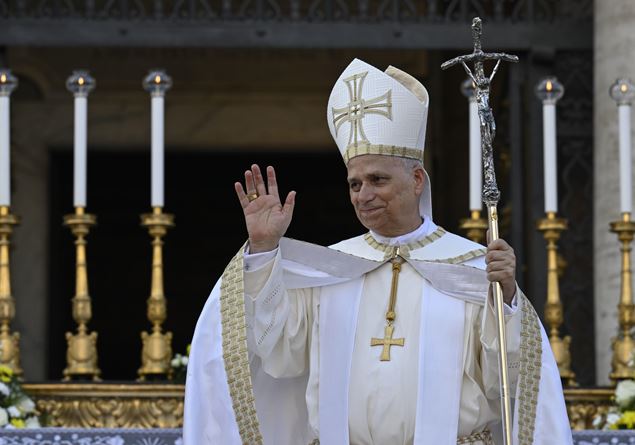What is inheritance devolution?
Definition
The inheritance devolution comes following a death and designates the process by which the heritage of the deceased is transmitted to its heirs. It can be carried out in two main terms.
Legal devolution
In the absence of a will, legal devolution applies. The property of the deceased is then distributed according to the rules of the Civil Code, which favor the nearest heirs (descendants, surviving spouse, ascendants, collateral).
Testamentary devolution
The testamentary devolution applies when the deceased wrote a will. The succession is then settled according to his wishes, in compliance with the imperative rules (in particular the hereditary reserve for children).
To summarize, the inheritance devolution consists in organizing the transmission of goods belonging to the deceased for the benefit of its beneficiaries, in compliance with the legislation in force.
Who inherits in the absence of a will and a surviving spouse?
If the deceased has not left a will, the legal inheritance devolution applies. The heirs are appointed in an order of priority divided into four orders. In the absence of a surviving spouse, the priority order is as follows.
Descendants (children, grandchildren)
The descendants (children, grandchildren) are the priority heirs. They inherit equally. If a child died before the deceased, his own children inherit his place (this is called representation).
The favored ascendants and collaterals (parents, brothers and sisters)
If the deceased person has no descendants, it is his parents (the ascendants) who inherit half of. His brothers and sisters or their children by representation (privileged collaterals) inherit the other half.
Ordinary ascendants (grandparents, great-grandparents)
If the deceased has neither descendant, brother, sister, neither nephew or niece, the succession goes to the grandparents (ordinary ascendants).
Ordinary collaterals (uncles, aunts, cousins)
In the absence of a close family, it is the most distant family members who inherit, ordinary collaterals.
What is the heritage order in the presence of a surviving spouse?
In the presence of a surviving spouse, special rules apply.
Children common to the spouse
If the deceased had common children with his spouse, the latter can choose between:
- The usufruct of all goods (children will have bare ownership).
- The full ownership of 1/4 of the succession (children will have the property of 3/4 of the succession).
Children from another union
If the deceased had children from another union, the surviving spouse receives 1/4 in full ownership, the rest being shared between the children from this previous union.
The deceased has no children
If the deceased had no children, but still had his parents, they receive ¼ of the estate, the surviving spouse obtains the rest. If he has neither children nor living parents, her husband receives the whole succession. It may happen that no heir is found, the succession then automatically returns to the French State.
What is the reservation share of the children of the deceased?
The reservation share of the deceased children corresponds to the minimum fraction of the succession which is necessarily allocated to them, even if the deceased has left a will. The reservation share varies depending on the number of children. If the deceased leaves:
- A child: the reservation share is 50 % of the succession.
- Two children: each of them receives at least 1/3 of the estate.
- Three or more children: the reservation share is 3/4 of the succession that children share with each other.
How is inheritance devolution established?
The inheritance devolution is established according to the applicable succession rules. The main steps to follow are as follows.
Search for the existence of a will or a donation between spouses
The notary will seek the existence of a will or a donation between spouses. He thus identifies if the deceased person left a will or a donation to the last living (her husband) thanks to the central file of the last wishes (FCDDV) provisions.
Distribution of the deceased heritage between its beneficiaries
In the presence of a will, the heritage of the deceased is devolved according to his own wishes, subject to compliance with the hereditary reserve.
Distribution of goods according to the inheritance order
In the absence of a will, the notary transmission of this assets according to the rules decreed by the Civil Code.
Request for supporting documents to the alleged heirs
Secondly, the notary requests supporting documents (deed of death of the deceased, family book, birth certificates of heirs, etc.) to alleged heirs to establish the list of legal heirs. In practice, the notary can use a genealogist if the heirs are not known. If no heir is identified, it is the state that recovers the succession.
Drafting of an act of notoriety
The notary then writes an act of notoriety which attests to the identity of the heirs and their respective rights in the inheritance.
Inventory of property, sharing between heirs, payment of inheritance tax and transfer of property
Once the inheritance devolution has been established, the notary performs the various operations:
How to obtain a certificate of inheritance devolution?
A certificate of inheritance devolution, also called an act of heir or act of notoriety, makes it possible to prove that one is heir. It can be obtained from the notary in charge of the estate if it is greater than 5,910 euros. Its cost is 69.23 euros. To this rate can also be added other notary fees, such as registration rights or formality emoluments. To make this request, it is necessary to provide the documents justifying the quality of heir.
Who must pay inheritance duties in the event of inheritance devolution?
Inheritance tax is borne by heirs, legatees (beneficiaries of a will) or donors (beneficiaries of a donation), depending on the fraction they receive from the estate.
What is the amount of inheritance tax?
Calculation elements
To determine the amount of inheritance tax, you should know:
- The taxable net assets which is equal to the difference between the assets (inventory of all the goods of the deceased) and the liabilities (all debts).
- The taxable net asset is distributed between each heir. The part that comes to them constitutes the taxable inheritance.
LAWSHIP
The heirs can benefit, all conditions fulfilled, from a personal allowance equal to:
- 100,000 euros for a child, a father or a mother.
- 15,932 euros for a brother or a sister.
- 7,967 euros for a nephew or a niece.
- 1,594 euros in the absence of another applicable abatement.
After applying the reduction, a scale is applied.
Scale for heirs in direct line (father, mother, child and grandchild)
Here is the applicable scale for direct online heirs:
Scale for brothers and sisters
Here is the applicable scale for brothers and sisters:
Inheritance tax for parents until the 4ᵉ degree amount to 55 %. For other heirs, they are taxed at the rate of 60 %.
>> Our service – Discover the best funeral insurance rates











